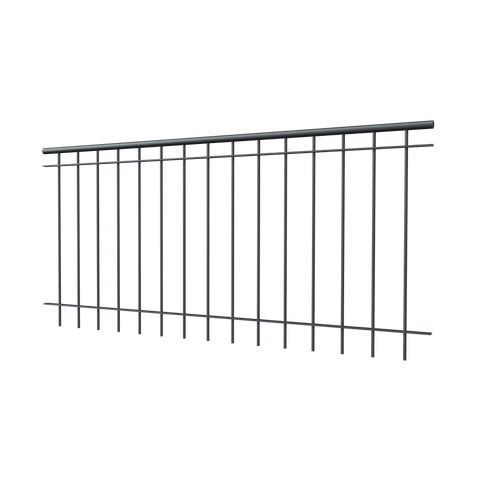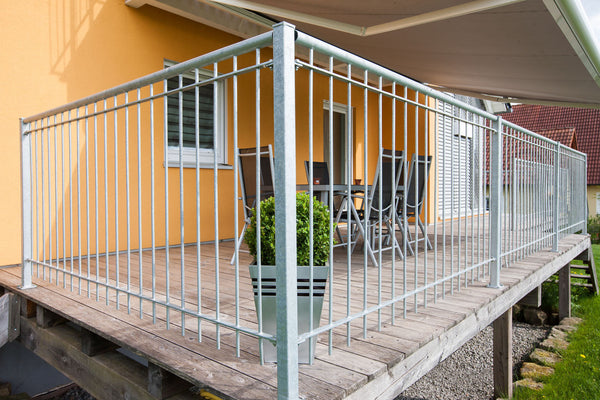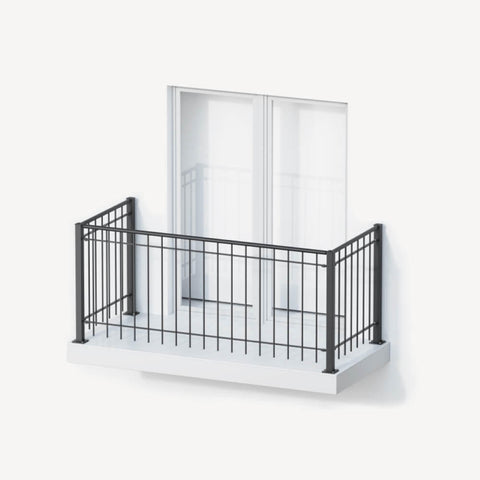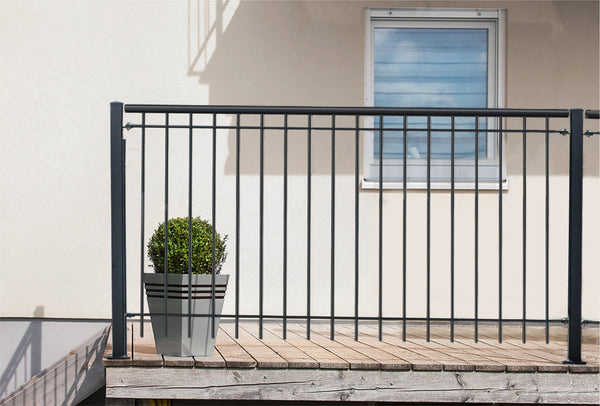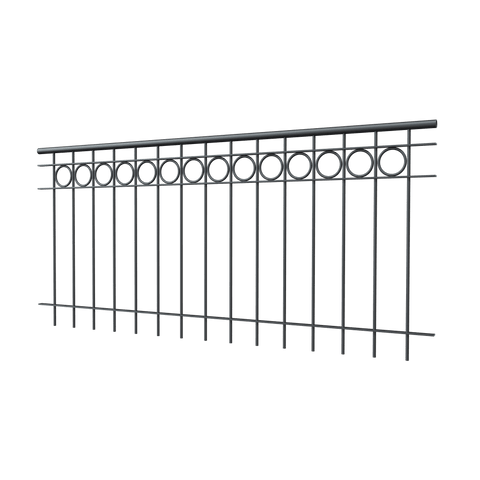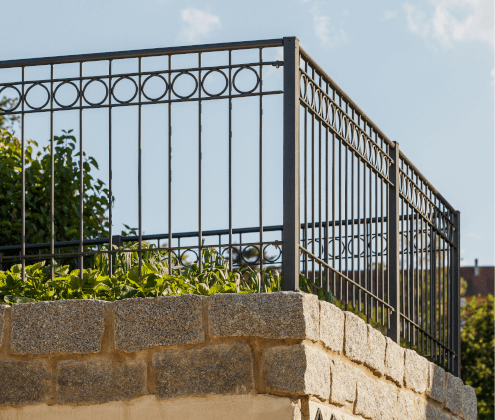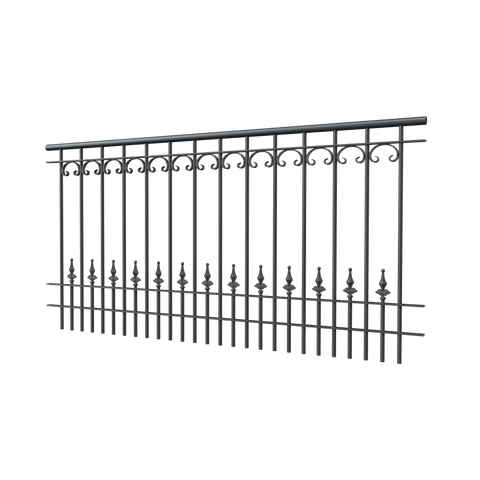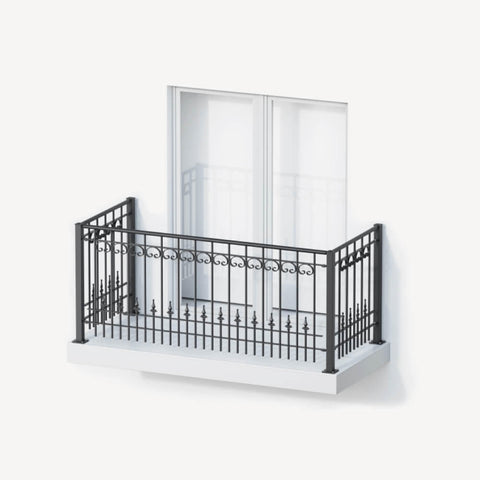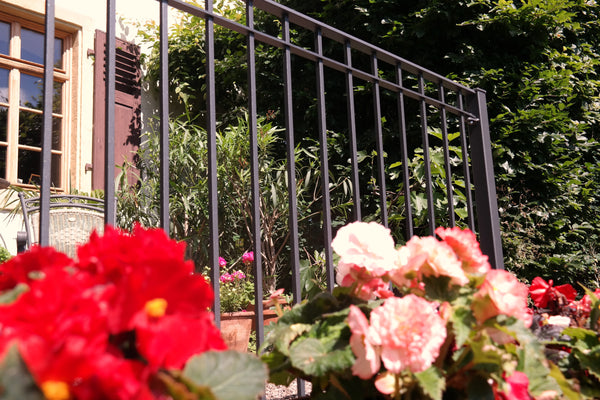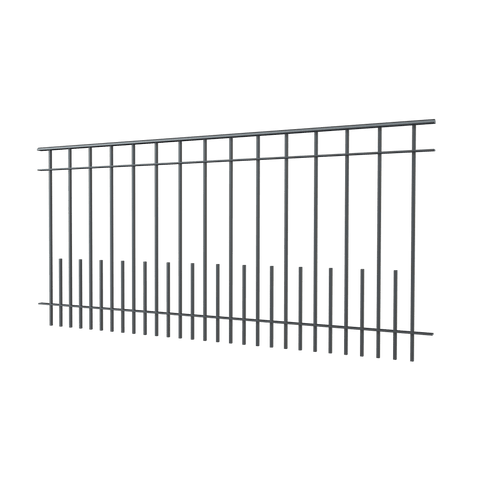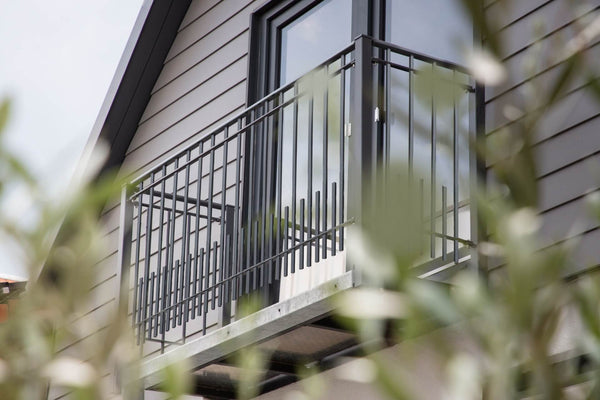Metal railings vs. wooden railings in comparison

When it comes to securing and designing stairs, balconies, or terraces, metal and wooden railings are two popular classics. Both materials have their own advantages and disadvantages, and the choice between a metal railing and a wooden railing depends on various factors.
To make your choice easier, we'll introduce you to the respective advantages and disadvantages of metal and wood – from aesthetics to environmental friendliness.
Aesthetics and Style
Metal railings impress with a modern and contemporary aesthetic. Depending on the model, they offer a subtle and elegant appearance that fits well with modern architectural styles. Wooden railings, on the other hand, have a warm and rustic character that is particularly well-suited to country and half-timbered houses.
Durability and Maintenance
Metal railings are extremely stable, durable, and resistant to the elements – especially when they have an appropriate surface treatment such as powder coating or galvanization. Even moisture and intense sunlight have little effect on a metal railing.
The situation is different with wooden railings. The natural material is susceptible to the elements as well as damage from moisture, sunlight, and insects. Appropriate sealing is therefore strongly recommended.

Versatility and adaptability
Metal railings are available in individual sizes and designs, allowing them to meet various architectural requirements. They offer greater versatility in terms of shapes and patterns. Wooden railings can also be customized in terms of size and design, of course, but they have certain limitations in terms of design compared to metal.
Cost Factor
Compared to wooden railings, metal railings are more expensive to purchase, but offer a better investment in the long run. The reasons for this are their decades-long durability and low maintenance requirements, which in turn lead to lower costs – this also applies to metal fence elements.
Wooden railings are generally cheaper to purchase, but require more maintenance over time and can incur higher repair costs.
Environmental friendliness
In terms of environmental friendliness, wooden railings are characterized by their biodegradability. Wood is environmentally friendly if it comes from sustainably managed forests (e.g., FSC-certified wood). However, since a wooden railing is prone to deterioration, it must be replaced more frequently, which is negative from an environmental perspective.
A metal railing is complex to manufacture and requires many resources – but in the best case scenario, it lasts a lifetime and, should it ever need to be replaced, can be recycled to a high degree, reducing the need for new raw materials.

Conclusion – Metal or wooden railing?
As you can see, both materials have their own advantages, and there is no clear winner in this comparison. The choice between metal and wooden railings ultimately depends on your personal preferences, budget, desired style, and maintenance requirements. It's important to consider all factors before making a decision.
Metal railings vs. wooden railings – the facts at a glance
|
|
Metal railings |
Wooden railings |
|
Appearance |
modern and Elegant |
Rustic and rustic |
|
Durability |
Very high, weather-resistant |
Susceptible to damage and weathering |
|
Maintenance |
Little maintenance required |
Very maintenance-intensive |
|
Costs |
more expensive |
cheaper |
|
Environmental friendliness |
resource-intensive production, but partially recyclable |
environmentally friendly if FSC-certified |
Our metal railings

Tip: At ELEO Express, you can get a metal balcony railing for less than €100 per element.
Artikel teilen

